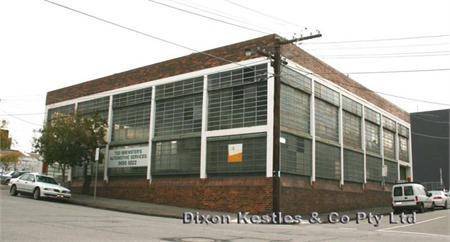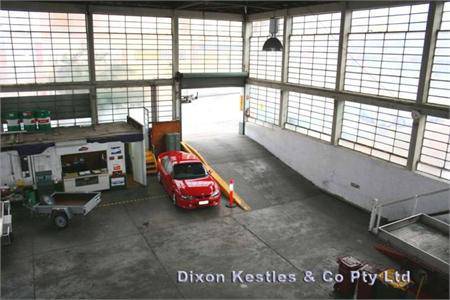| Back to search results » | Back to search page » |
|
Former Coca-Cola Factory
Location82 - 86 Clarke Street,, SOUTH MELBOURNE VIC 3205 - Property No B3465
File NumberB3465LevelState |
|
Statement of Significance
What is significant?
The former Coca-Cola factory/bottling plant at 82-86 Clarke Street, South Melbourne is a modestly scaled brick and concrete building on a corner site, with a concealed low hipped roof. The four elevations are dominated by large multi-paned steel-framed windows, within a large structural frame of thin concrete beams and columns. Red clinker bricks form a strong base and are used again as a parapet. The interior is one large open double height space.
Thebuilding was erected in late 1938 for the newly-established Victorian arm of the Coca-Cola Company, the famous and popular US-based beverage corporation, as part of its first foray into the Australian market.
Although Coca-Cola was first manufactured in1886 and first marketed outside the USA in 1900, it was not until the later 1920s and '30s that company president Robert W Woodruff initiated a bold regime to make the product available throughout the world though a licensing system.
After the company's export division undertook a survey of Australia in 1937-38, local production swiftly followed with the first factory at Sydney in June 1938, followed by others at Melbourne, Adelaide and in 1942 in Brisbane (Woollongabba).
Manufacture and distribution began on a modest scale in these relatively small premises, only to burgeon substantially in the post-Second World War period, prompting the establishment of much larger beverage production complexes in the state capitals.
The Clarke Street building ceased to be used by Coca Cola in the early 1950s, and has been used for a variety of industrial purposes since then.
How is it significant?
The former Coca-cola factory is of historical and architectural significance at the State level.
Why is it significant?
Historically, the former Coca-Cola factory/bottling plant in South Melbourne is significant for housing the original local production of one of the most famous and internationally recognized products in the world. It is also the oldest and most intact of the two surviving plants built in Australia in the first wave of pre WWII production.
Architecturally, the structure is notable for its generally Modernist design and detailing, rather than the more typical Art Deco of the1930s. The four facades are dominated by large areas of glazing, framed by a simple large scale concrete structural grid, while the glazing is delicately modulated by small-pane horizontal grid framing.
Classified: 18/04/2011
Group
Manufacturing and Processing
Category
Beverage Manufacture





